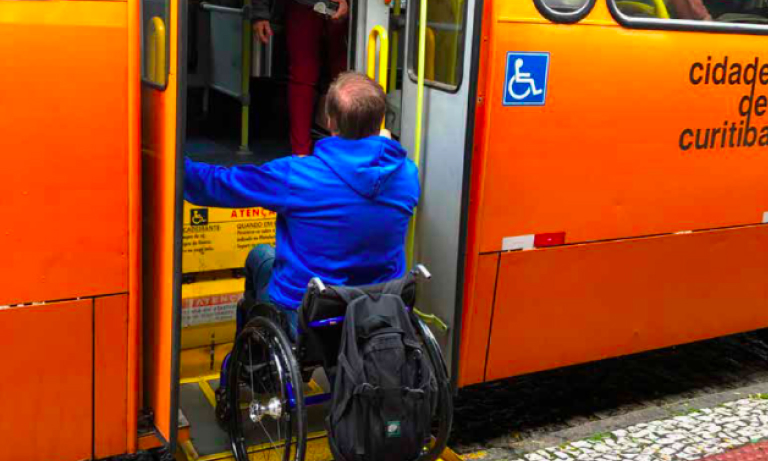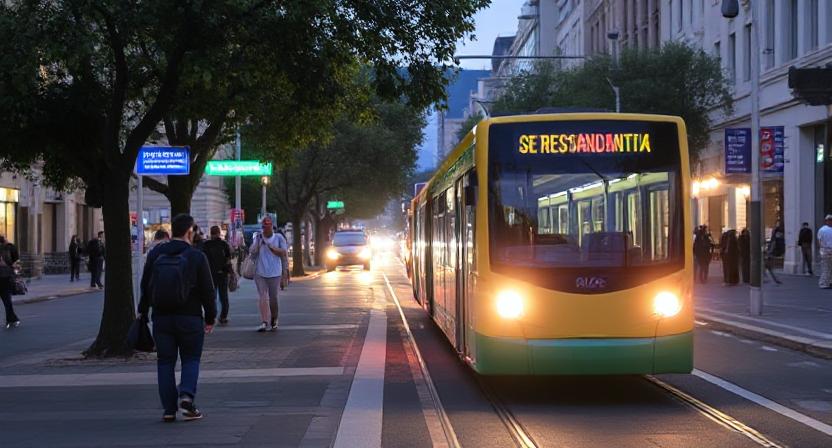SiMa.ai to Accelerate Edge AI Adoption with Cisco for Industry 4.0 – PR Newswire

Report on SiMa.ai and Cisco Collaboration for Industrial Edge AI
Executive Summary
A go-to-market collaboration has been established between SiMa.ai and Cisco to integrate advanced Artificial Intelligence (AI) into Industry 4.0 environments. The partnership combines SiMa.ai’s energy-efficient Modalix AI platform with Cisco’s ruggedized IE3500 series of industrial Ethernet switches. This integrated solution is designed to deliver production-grade, real-time AI capabilities at the industrial edge, addressing critical needs in manufacturing, logistics, and automation while significantly contributing to several United Nations Sustainable Development Goals (SDGs).
Alignment with Sustainable Development Goals (SDGs)
The deployment of this integrated edge AI solution provides a direct pathway to advancing key sustainability objectives by enhancing industrial efficiency, resilience, and innovation.
SDG 9: Industry, Innovation, and Infrastructure
This collaboration is a catalyst for achieving SDG 9 by fostering technological upgrading and innovation within industrial sectors. The solution facilitates the development of resilient infrastructure through:
- Deploying robust, industrial-grade hardware (Cisco IE3500) capable of withstanding harsh environments.
- Promoting the adoption of clean and environmentally sound technologies, specifically low-power AI processing (SiMa.ai Modalix).
- Enabling the digital transformation of manufacturing, energy, and transportation industries, making them more technologically advanced and sustainable.
SDG 12: Responsible Consumption and Production
The solution directly supports SDG 12 by enabling more efficient and sustainable production patterns. AI-driven applications help achieve:
- Waste Reduction: Real-time quality inspection and anomaly detection minimize production defects and material waste.
- Resource Optimization: Predictive maintenance reduces equipment downtime and optimizes the use of spare parts and resources.
- Improved Efficiency: Process optimization applications enhance operational efficiency, leading to lower consumption of energy and raw materials per unit of production.
SDG 7: Affordable and Clean Energy
A core feature of the SiMa.ai Modalix platform is its exceptional performance-per-watt, which contributes to SDG 7 by reducing the energy footprint of advanced industrial computation. Furthermore, the technology enables applications such as intelligent grid monitoring and equipment diagnostics in the energy sector, supporting the development of more efficient and reliable energy infrastructure.
SDG 11: Sustainable Cities and Communities
By improving the efficiency and safety of industrial and logistical systems, the solution contributes to SDG 11. Key applications include:
- Sustainable Transportation: Fleet management and route optimization reduce fuel consumption and emissions.
- Efficient Logistics: Automated warehouse and inventory management systems streamline supply chains, reducing the environmental impact of logistics operations.
Core Technological Components and Benefits
The synergy between SiMa.ai’s AI processing and Cisco’s networking infrastructure delivers a comprehensive solution for industrial environments.
Key Solution Benefits
- Real-Time AI Processing: The Modalix platform executes complex AI models at the edge, eliminating cloud latency and enabling immediate decision-making for critical applications.
- Industrial-Grade Reliability: Cisco’s IE3500 switches provide a robust and secure networking foundation purpose-built for demanding industrial settings, ensuring high availability for AI workloads.
- Simplified and Secure Deployment: The integration is streamlined through Power over Ethernet (PoE) capability, which powers both cameras and the Modalix platform via a single connection. Cisco Secure Equipment Access (SEA) enables secure remote management of all edge devices.
- Enhanced Operational Efficiency: The combined technologies facilitate advanced applications that reduce downtime, improve product quality, and optimize resource utilization, driving productivity and sustainability.
Industry 4.0 Applications
The solution enables a wide range of applications across multiple industrial sectors, accelerating the adoption of Industry 4.0 principles.
- Smart Manufacturing: Real-time quality control, predictive maintenance, and production optimization.
- Industrial Automation: Intelligent robotics, automated inspection, and process control.
- Supply Chain and Logistics: Inventory management, package sorting, and warehouse automation.
- Energy and Utilities: Grid monitoring, equipment diagnostics, and safety compliance.
- Transportation: Fleet management, route optimization, and autonomous vehicle systems.
Market Outlook and Availability
The global edge AI market is undergoing rapid expansion, with industrial applications representing a primary growth segment. This collaboration positions both SiMa.ai and Cisco to meet the increasing demand for solutions that address the unique challenges of deploying AI in industrial environments, particularly concerning latency, security, and reliability. The combined SiMa.ai Modalix and Cisco IE3500 solution is available for customer evaluation, supported by proof-of-concept programs and comprehensive technical services.
SDGs Addressed in the Article
SDG 9: Industry, Innovation and Infrastructure
- The article is centered on technological innovation for industrial environments, specifically the collaboration between SiMa.ai and Cisco to advance “Industry 4.0.” It discusses creating “production-grade edge AI solutions across manufacturing, logistics, and industrial automation use cases” and building upon “proven industrial networking infrastructure.”
SDG 7: Affordable and Clean Energy
- The article explicitly highlights the energy efficiency of the technology. It states that SiMa.ai’s Modalix platform delivers “high-performance AI inference with exceptional energy efficiency” and has a unique architecture that “delivers exceptional performance per watt.” This directly relates to promoting energy-efficient technologies.
SDG 12: Responsible Consumption and Production
- The technology described enables applications that lead to more sustainable production patterns. The article mentions that the solution helps “reduce downtime, improve product quality, and optimize resource utilization” through applications like “predictive maintenance” and “quality inspection,” which directly contribute to reducing waste and using resources more efficiently.
SDG 8: Decent Work and Economic Growth
- The article focuses on enhancing economic productivity through technological upgrades. It describes how the solution leads to “Enhanced Operational Efficiency” and helps “unlock the full potential of Industry 4.0” by enabling “production optimization.” This aligns with the goal of achieving higher levels of economic productivity through innovation.
SDG 11: Sustainable Cities and Communities
- The article mentions applications relevant to sustainable infrastructure in cities and communities, such as in “Energy and Utilities” for “Grid monitoring” and in “Transportation” for “fleet management, route optimization, and autonomous vehicle systems.” These applications contribute to more efficient and sustainable urban services.
Specific SDG Targets Identified
SDG 9: Industry, Innovation and Infrastructure
- Target 9.1: Develop quality, reliable, sustainable and resilient infrastructure. The article addresses this by describing Cisco’s IE3500 switches as “robust and ruggedized” and providing “industrial-grade reliability” and “reliable connectivity” for harsh industrial environments.
- Target 9.4: Upgrade infrastructure and retrofit industries to make them sustainable. The collaboration aims to bring “AI capabilities to Industry 4.0 environments.” The integration of an “energy-efficient Modalix AI platform” and solutions that “optimize resource utilization” directly supports the retrofitting of industries with cleaner and more efficient technology.
SDG 7: Affordable and Clean Energy
- Target 7.3: Double the global rate of improvement in energy efficiency. The article directly supports this target by emphasizing SiMa.ai’s “exceptional energy efficiency” and “exceptional performance per watt,” which represents a technological advancement in improving energy efficiency for AI processing.
SDG 12: Responsible Consumption and Production
- Target 12.2: Achieve the sustainable management and efficient use of natural resources. The solution is explicitly stated to help organizations “optimize resource utilization.”
- Target 12.5: Substantially reduce waste generation. The article describes applications like “predictive maintenance” which reduces equipment failure and waste, and real-time “quality inspection” which helps “improve product quality,” thereby reducing the waste from defective products.
SDG 8: Decent Work and Economic Growth
- Target 8.2: Achieve higher levels of economic productivity through diversification, technological upgrading and innovation. The entire premise of the article is about technological innovation (“AI capabilities to Industry 4.0 environments”) leading to “Enhanced Operational Efficiency,” “production optimization,” and “process optimization.”
SDG 11: Sustainable Cities and Communities
- Target 11.2: Provide access to safe, affordable, accessible and sustainable transport systems for all. The technology enables applications in transportation, including “route optimization,” which is a key component of creating more efficient and sustainable transport systems.
Indicators for Measuring Progress
SDG 9: Industry, Innovation and Infrastructure
- Indicator: Adoption rate of advanced, resilient industrial infrastructure. The article implies this through its “go-to-market initiatives” and “proof-of-concept programs” designed to help customers “deploy edge AI solutions.”
SDG 7: Affordable and Clean Energy
- Indicator: Energy efficiency of technology. The article explicitly mentions “performance per watt” as a key feature of the SiMa.ai Modalix platform, which can be used as a direct indicator of energy efficiency.
SDG 12: Responsible Consumption and Production
- Indicator: Metrics for operational efficiency and waste reduction. The article mentions several measurable outcomes that can serve as indicators, including “reduction in downtime,” “improvement in product quality,” and “optimization of resource utilization.”
SDG 8: Decent Work and Economic Growth
- Indicator: Level of implementation of advanced industrial technologies. The article lists specific “Industry 4.0 applications” that can be deployed, such as “Smart Manufacturing,” “Industrial Automation,” and “automated inspection,” whose adoption rates can be measured.
SDG 11: Sustainable Cities and Communities
- Indicator: Efficiency improvements in urban systems. The article implies indicators such as “optimized transportation routes” and the deployment of “Grid monitoring” systems, which can be measured for their impact on sustainability.
Summary of SDGs, Targets, and Indicators
| SDGs | Targets | Indicators Identified in the Article |
|---|---|---|
| SDG 9: Industry, Innovation and Infrastructure | 9.1: Develop quality, reliable, sustainable and resilient infrastructure. 9.4: Upgrade infrastructure and retrofit industries to make them sustainable. |
Deployment of “robust and ruggedized” industrial networking infrastructure; Adoption of “Industry 4.0” AI solutions in manufacturing and logistics. |
| SDG 7: Affordable and Clean Energy | 7.3: Double the global rate of improvement in energy efficiency. | Measurement of “exceptional performance per watt” as a key metric for the AI platform’s energy efficiency. |
| SDG 12: Responsible Consumption and Production | 12.2: Achieve the sustainable management and efficient use of natural resources. 12.5: Substantially reduce waste generation. |
Metrics showing “optimization of resource utilization”; Reduction in downtime via “predictive maintenance”; Improvement in “product quality” from real-time inspection. |
| SDG 8: Decent Work and Economic Growth | 8.2: Achieve higher levels of economic productivity through technological upgrading and innovation. | Measures of “Enhanced Operational Efficiency”; Implementation of “production optimization” and “process optimization” in industrial settings. |
| SDG 11: Sustainable Cities and Communities | 11.2: Provide access to sustainable transport systems. | Implementation of “route optimization” for transportation fleets; Deployment of “Grid monitoring” for energy and utility management. |
Source: prnewswire.com

What is Your Reaction?
 Like
0
Like
0
 Dislike
0
Dislike
0
 Love
0
Love
0
 Funny
0
Funny
0
 Angry
0
Angry
0
 Sad
0
Sad
0
 Wow
0
Wow
0













































































